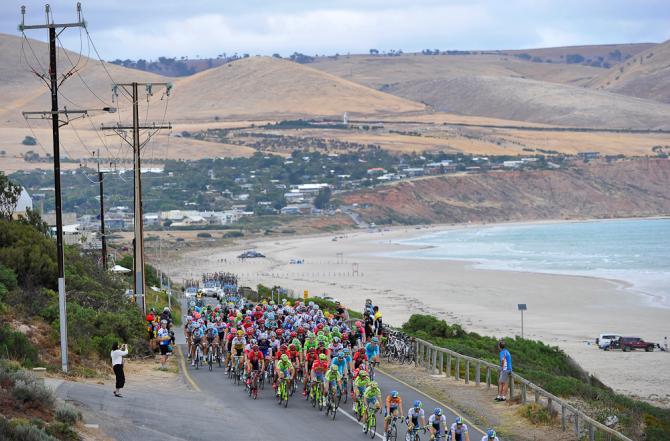Five conclusions from the 2016 Tour Down Under
Australian dominance, emergence of Woods and changing the parcours
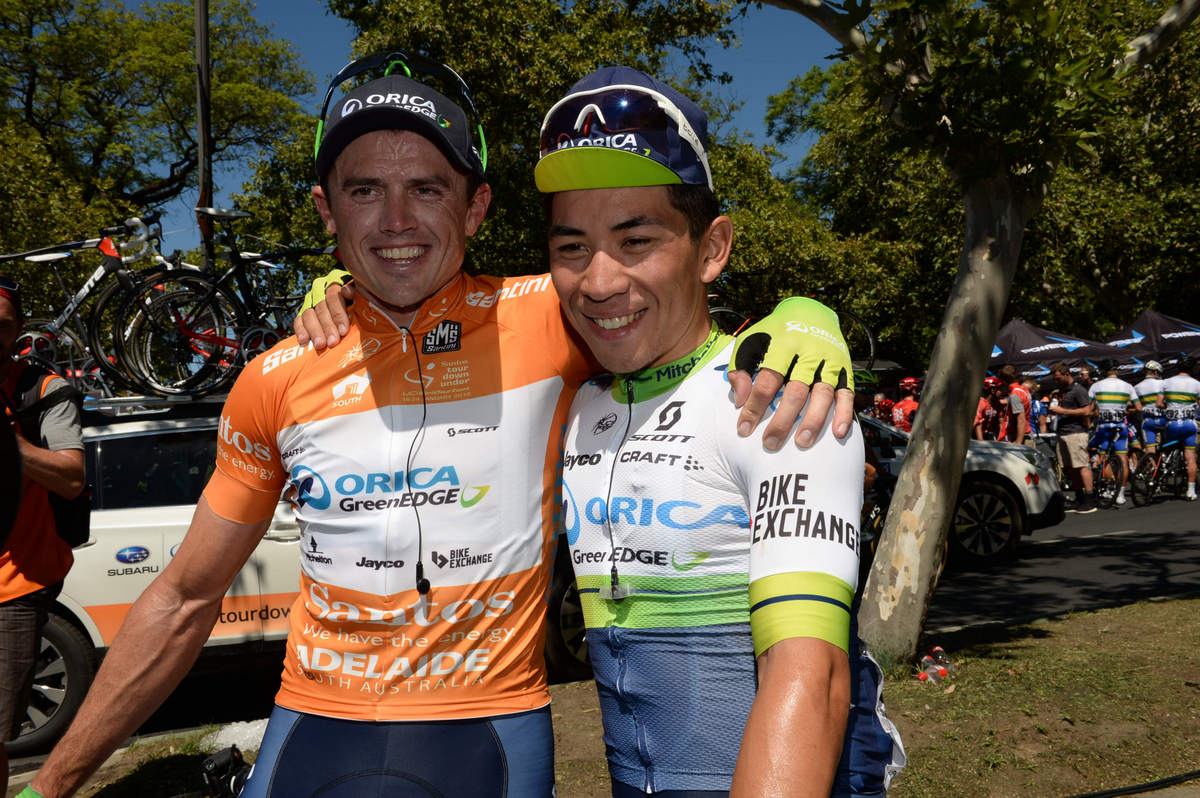
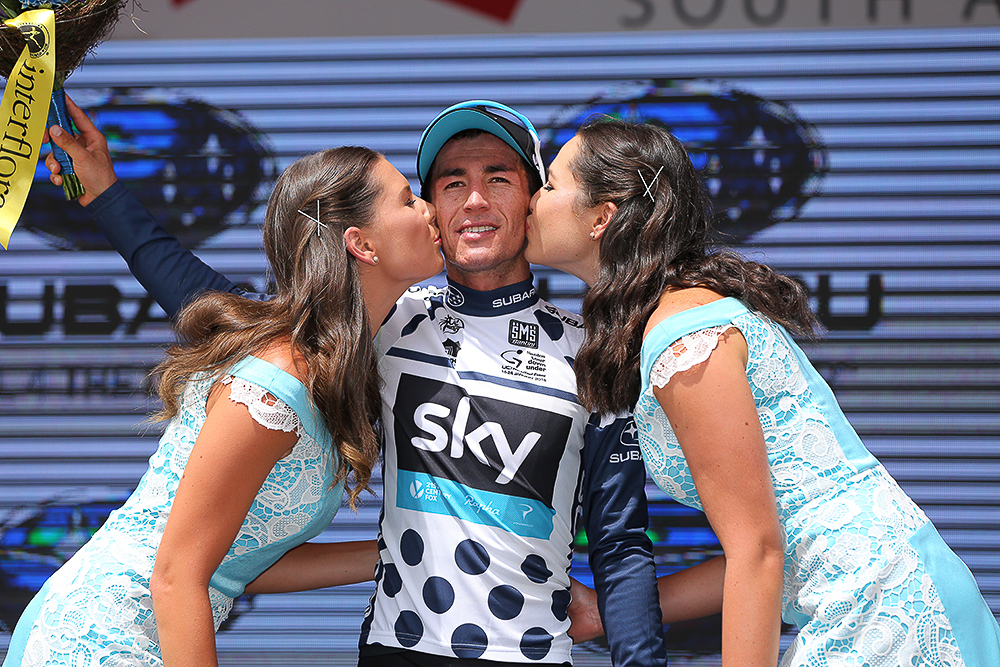
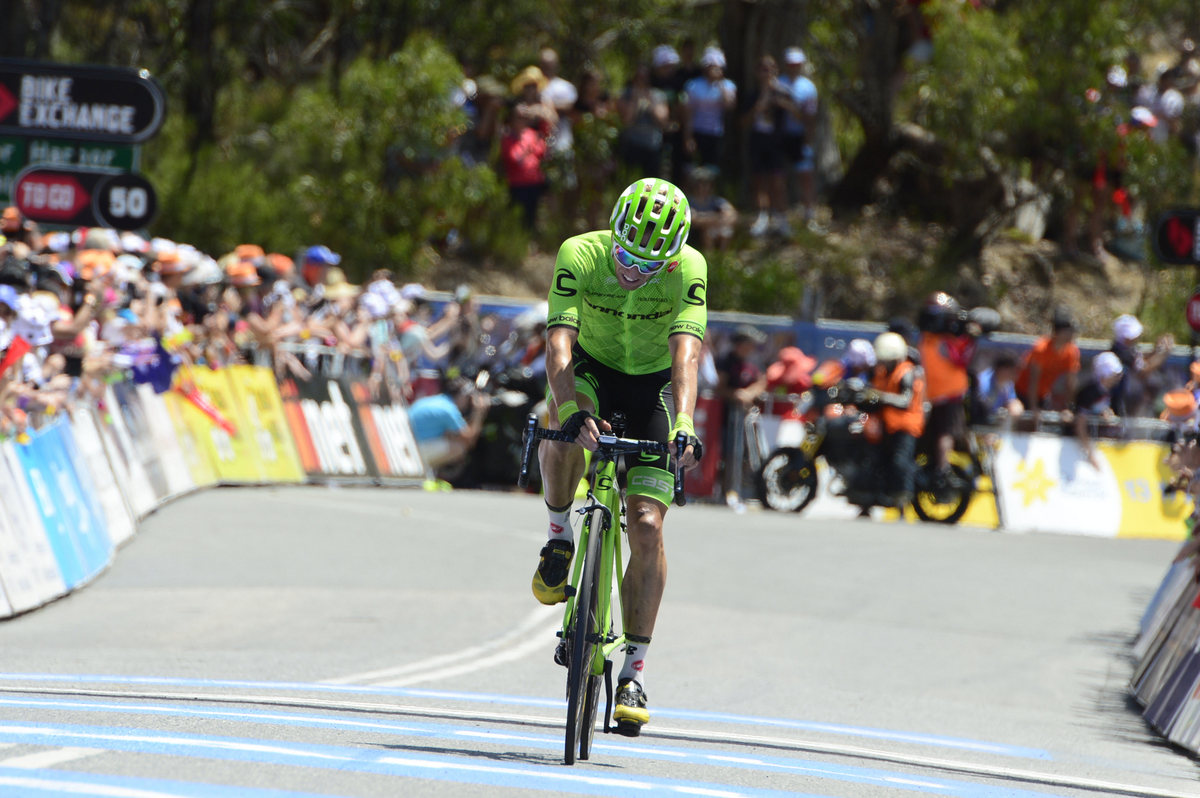
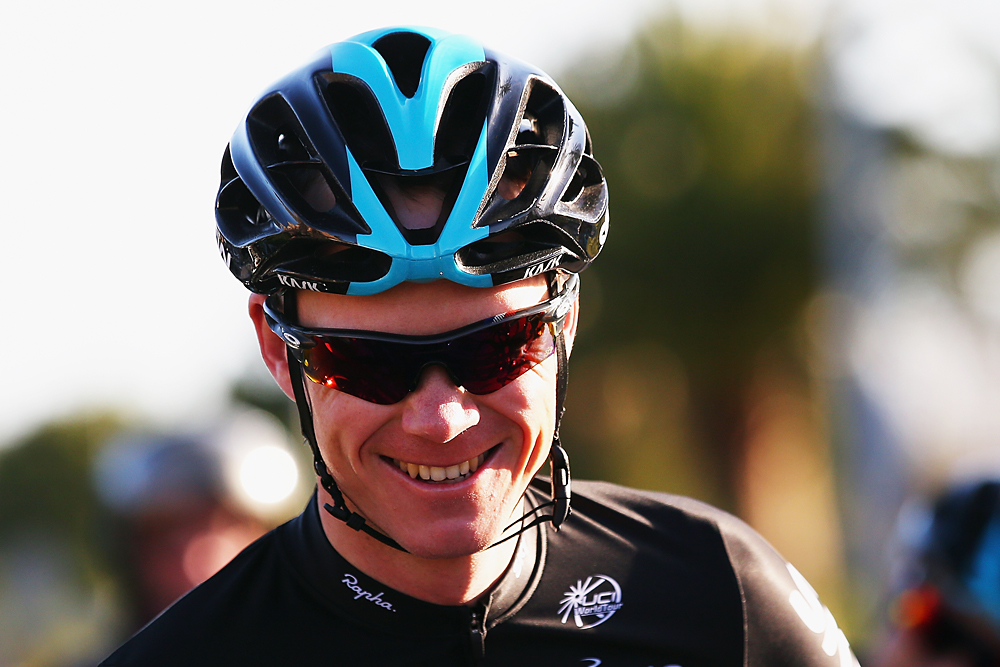
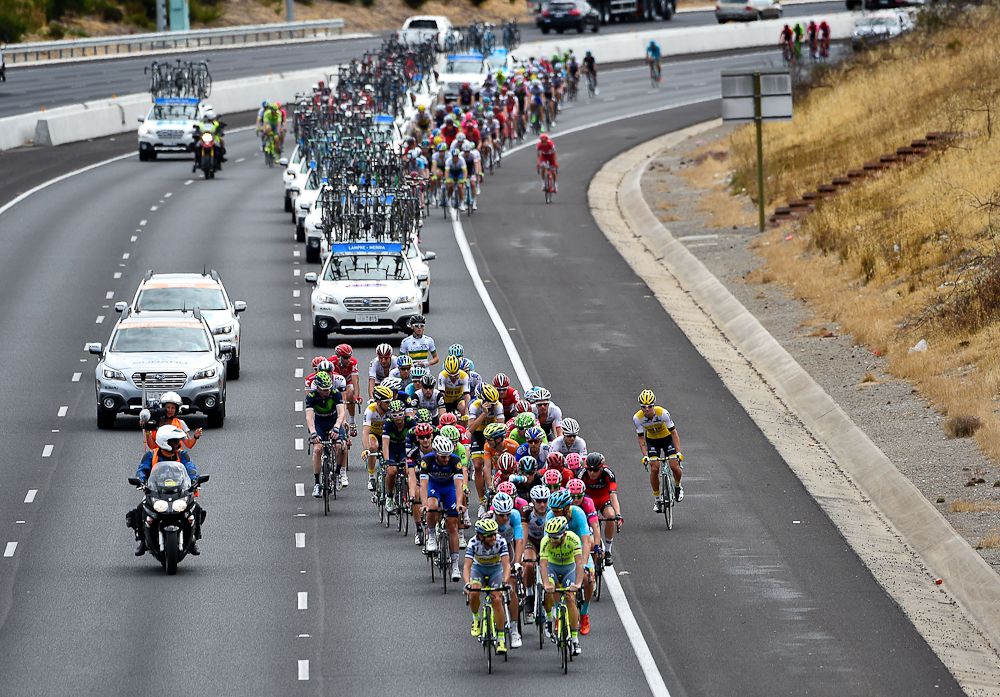
Orica-GreenEdge domination
Orica-GreenEdge’s Australian national championships road race was one its worst performances in its four-year history. That was quickly forgotten this week as the home team dominated the opening WorldTour event, winning four stages, wearing the leader's jersey for four of the five days, winning the overall and claiming the points classification.
The team well and truly rose to the challenge at the Tour Down Under, fulfilling its dual objectives of stage wins with Caleb Ewan and the overall with Simon Gerrans. The stage 2 crash into Stirling inside the final 500 metres that saw Gerrans and Daryl Impey fall was the only blemish of the race. From the moment Ewan opened up his sprint in the Down Under Classic to his uncatchable low aero position that landed his second stage of the week on Sunday, Orica-GreenEdge enjoyed a dream start to the season.
No rider has defended the ochre jersey but Gerrans is already a favourite for the 2017 edition of the race and his fifth overall victory having made the race his own since first winning the GC in 2006. Gerrans' 2014 victory set up his best season as a professional yet and the 35-year-old will be hoping to have laid the platform for success once again in Adelaide.
The Cadel Evans Great Ocean Road Race and the Jayco Herald Sun Tour are the team’s next two objectives with pressure remaining high on the team to keep its winning start to 2016 running.
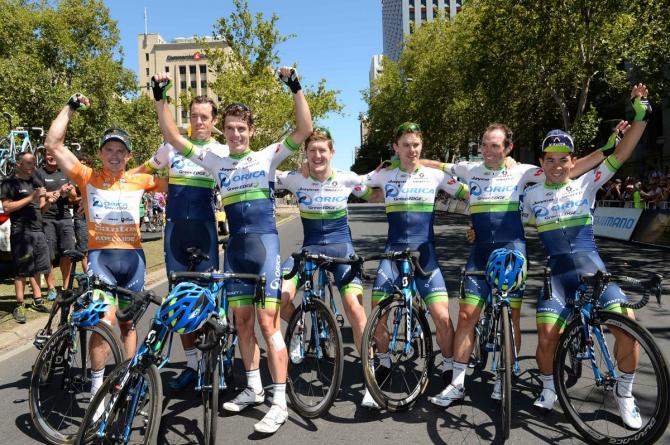
Where were the non-Australians?
Six stages, six wins for Australia. Just as Australia completed a whitewash of the last Ashes cricket series down under, the travelling contingent of riders represented by 29 other nations go home all but empty handed. Team Sky's Colombian climber Sergio Henao is the exception having won the king of the mountains classification.
Get The Leadout Newsletter
The latest race content, interviews, features, reviews and expert buying guides, direct to your inbox!
Gerrans’ win was the 11th from 18 editions for Australia at the race and extends the run of local winners to three years with Tom-Jelte Slagter’s 2013 triumph the last European success of the race. Germany and Spain are the only other nations with multiple wins at the race.
Considering the timing of the race as the season opener and warm weather conditions, the Tour Down Under favours riders from Australia accustomed to peaking in January for the national championships and motivated for the only southern hemisphere WorldTour race. The dominance of the Australians is sure to reinforce for the short term that it’s a race for the locals and for everybody else, a nice relaxed way to get the year underway and catch some sunshine.
Another clean sweep in 2017 could well be on the cards if Ewan and Gerrans are both down to race again.
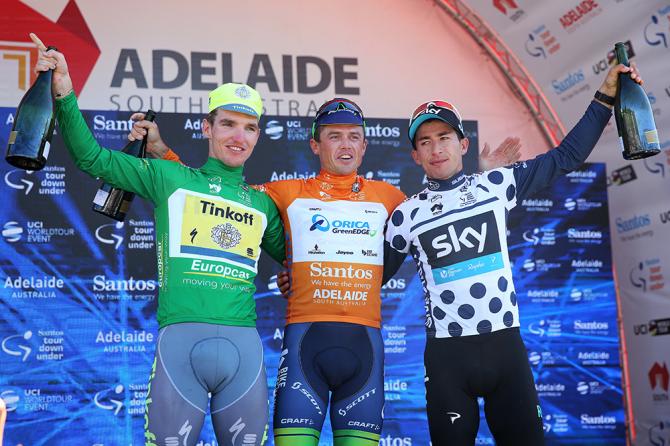
What will Michael Woods do next?
Michael Woods entered the Tour Down Under a relative unknown to the peloton and public but internally, his Cannondale team were telling him not to place any limits on himself for his first WorldTour stage race. With Simon Clarke calling the shots on the road for the team, Woods first came to attention climbing up the Corkscrew on stage 3. The 29-year-old Canadian repeated his efforts on the queen stage as he and Sergio Henao were the only riders capable of following Richie Porte when the Australian made his move up Willunga Hill.
The question for Woods is now what can he do in season 2016? A former runner, Woods’ physiology isn’t in question but how he performs in Europe when the racing heats up will be the measure of his season. A consistent performer on the American circuit last season with the Optum Continental team, Woods will be one of the riders to watch in the early season with his race programme possibly now altered by his sports directors to capitalise on his form and condition.
It is a similar story for Woods teammate Paddy Bevin who was tenth on his WorldTour debut. The 24-year-old New Zealander is also in his first season with Cannondale and is considered one of the most promising neo-pros in the peloton and adds excitement to the argyle team.
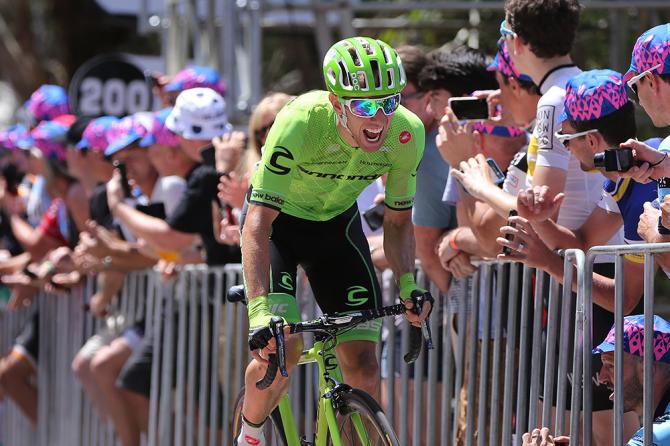
WorldTour licence and Froome factor?
When Brian Cookson spoke with the media on the morning of the queen stage, it was only a matter of time before the UCI President was asked his thoughts on Chris Froome's 'non-appearance' at the Tour Down Under. The defending champion is set to fly into Adelaide for a weeklong training camp before making his season debut next month at the Jayco Herald Sun Tour.
Describing the decision as ‘puzzling’, Cookson sought to explain a central tenant of the WorldTour is that the best riders line up at the best races. While the UCI cannot force particular cyclists, pre-Tour Down Under there was plenty of speculation as to why a race would need to register itself as WorldTour if it cannot attract the best riders in the business.
What impact Froome would have had on the race in sporting terms will remain unknown but the fact of the matter is that in Argentina at the Tour de San Luis, Nairo Quintana, Vincenzo Nibali and world champion Peter Sagan all took part in a 2.1 categorised event as the star power stayed away from Adelaide in 2016.
A race in January may have the Tour De France contenders pinning on a number but the level of racing will not reach that of July. For the UCI and race organisers though, having the best riders in the peloton at second and third category level races in favour of WorldTour events is less than ideal.
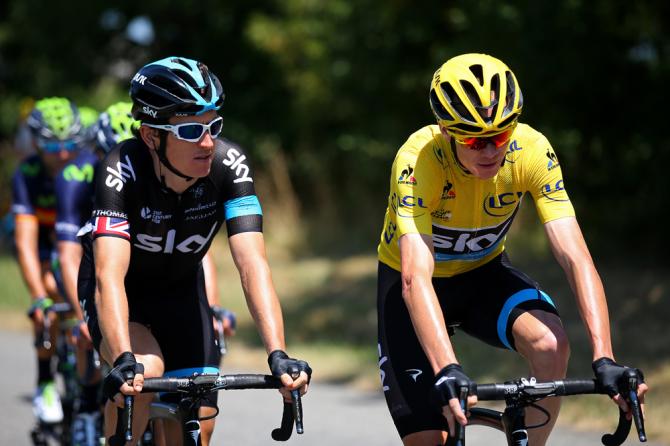
Does the race need a shake up?
The Tour Down Under has progressively shifted from a sprinters race to become an event for climbers and puncheur like riders. There is no need to drastically alter the race, the Tour Down Under is somewhat a victim of its stability and success but calls for innovation of the parcours are a perennial topic of discussion on the Monday following the conclusion of the race.
A new stage finish in Lyndoch is symbolic of the potential the race has to continue visiting new locations, the inclusion of Norton Summit at the start of stage 4 was another example of the race seeking out new challenges. However, Willunga Hill remains the jewel in the crown for the Tour Down Under, playing the deciding card in a six-hand deck. Stage 3 over the Corkscrew was no doubt a challenging conclusion to the day’s racing but it was the three-kilometre climb on Saturday that affected the overall outcome of the race. If not for a time split in the peloton on stage 4, Porte could have started the final stage one second behind Gerrans. Even with time bonus on the road during the final day circuit race, recent examples have proven whoever starts in the leader’s jersey will hold on for the win.
One potential shake up for the race is to introduce a short prologue or final day time trial. Asking teams to bring full time trial bikes down under in January is a big ask, and a financial strain, but the race could take a leaf out of the Dubai Tour book and schedule in a city street prologue on road bikes for example. There is no denying the Tour Down Under works as a race, it doesn’t need drastic change, but in order to starve off the threat of what the Australian summer offers in alternatives, a minor change here could be key to ensuing the worlds best are lining up in Adelaide each January. Race director Mike Turtur signed off for 2016 with "there’s going to be some nice surprises" suggesting the winds of change could soon be blowing in Adelaide.
